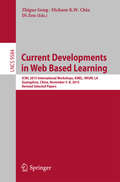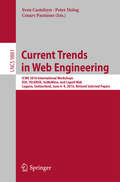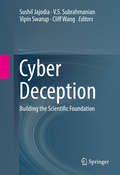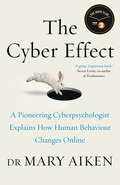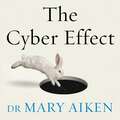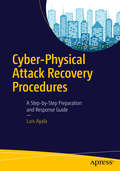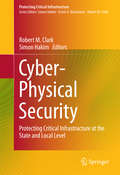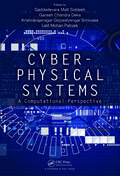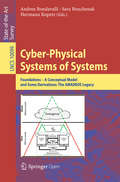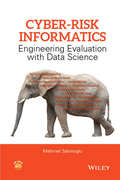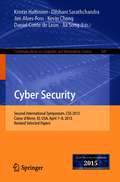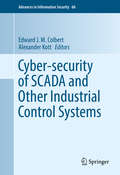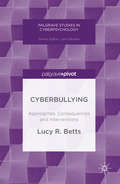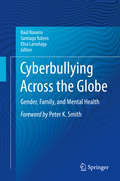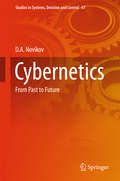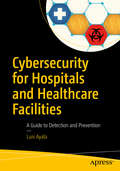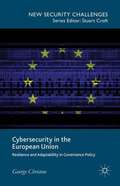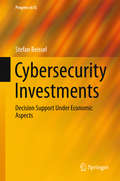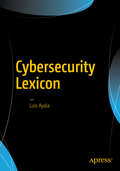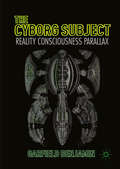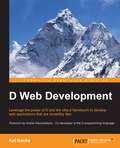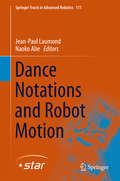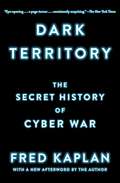- Table View
- List View
Curation: The power of selection in a world of excess
by Michael Bhaskar'A terrific and important book . . . it's a great, fresh take on how the 21st century is transforming the way we select everything from food to music' David Bodanis, author of E=MC2In the past two years humanity has produced more data than the rest of human history combined. We carry a library of data in our pockets, accessible at any second. We have more information and more goods at our disposal than we know what to do with. There is no longer any competitive advantage in creating more information. Today, value lies in curation: selecting, finding and cutting down to show what really matters.Curation reveals how a little-used word from the world of museums became a crucial and at times controversial strategy for the twenty-first century. Today's most successful companies - Apple, Netflix, Amazon - have used curation to power their growth, by offering customers more tailored and appropriate choices.Curation answers the question of how we can live and prosper in an age of information overload. In the context of excess, it is not only a sound business strategy, but a way to make sense of the world.
Current Developments in Web Based Learning: ICWL 2015 International Workshops, KMEL, IWUM, LA, Guangzhou, China, November 5-8, 2015, Revised Selected Papers (Lecture Notes in Computer Science #9584)
by Zhiguo Gong Dickson K. W. Chiu Di ZouThis bookconstitutes the thoroughly revised selected papers of the workshops of the 14thInternational Conference of Web Based Learning, ICWL 2015, held in Guangzhou,China, in November 2015. This volumecomprises papers of three workshops: 1. The 5thInternational Symposium on Knowledge Management and E-Learning, KMEL 2015 2. Thefirst International Workshop on User Modeling for Web Based Learning, IWUM 2015 3. TheInternational Workshop on Learning Analytics
Current Trends in Web Engineering: ICWE 2016 International Workshops, DUI, TELERISE, SoWeMine, and Liquid Web, Lugano, Switzerland, June 6-9, 2016. Revised Selected Papers (Lecture Notes in Computer Science #9881)
by Cesare Pautasso Sven Casteleyn Peter DologThis book constitutes the thoroughly refereed post-workshop proceedings of the 16th International Conference on Web Engineering, ICWE 2016, held in Lugano, Switzerland, in June 2016. The 15 revised full papers together with 5 short papers were selected form 37 submissions. The workshops complement the main conference, and provide a forum for researchers and practitioners to discuss emerging topics. As a result, the workshop committee accepted six workshops, of which the following four contributed papers to this volume: 2nd International Workshop on TEchnical and LEgal aspects of data pRIvacy and SEcurity (TELERISE 2016) 2nd International Workshop on Mining the Social Web (SoWeMine 2016) 1st International Workshop on Liquid Multi-Device Software for the Web (LiquidWS 2016) 5th Workshop on Distributed User Interfaces: Distributing Interactions (DUI 2016)
Cyber Deception: Building the Scientific Foundation
by Sushil Jajodia Cliff Wang V. S. Subrahmanian Vipin SwarupThis edited volume features a wide spectrum of the latest computer science research relating to cyber deception. Specifically, it features work from the areas of artificial intelligence, game theory, programming languages, graph theory, and more. The work presented in this book highlights the complex and multi-facted aspects of cyber deception, identifies the new scientific problems that will emerge in the domain as a result of the complexity, and presents novel approaches to these problems. This book can be used as a text for a graduate-level survey/seminar course on cutting-edge computer science research relating to cyber-security, or as a supplemental text for a regular graduate-level course on cyber-security.
The Cyber Effect: A Pioneering Cyberpsychologist Explains How Human Behaviour Changes Online
by Mary AikenDr Mary Aiken is the world's leading expert in forensic cyberpsychology - a discipline that combines psychology, criminology and technology to investigate the intersection between technology and human behaviour. In this, her first book, Aiken has created a starting point for all future conversations about how the Internet is shaping our perception of the world, development and behaviour, societal norms and values, children, safety and security.Covering everything from the impact of screens on the developing child to the explosion of teen sexting, and the acceleration of compulsive and addictive online behaviours (gaming, shopping, pornography), The Cyber Effect also examines the escalation in cyberchondria (self-diagnosis online), cyberstalking and organized crime in the Deep Web. Cyberspace is an environment full of surveillance, but who is looking out for us? Full of surprising statistics and incredible-but-true case studies of the hidden trends that are shaping our culture, this book raises troubling questions about where the digital revolution is taking us.Upending your assumptions about your online life and forever changing the way you think about the technology that you, your friends and your family use, The Cyber Effect offers a fascinating and chilling look at a future we can still do something about.
The Cyber Effect: A Pioneering Cyberpsychologist Explains How Human Behaviour Changes Online
by Mary AikenFrom the world's leading expert in forensic cyberpsychology - a discipline that combines psychology, forensics and technology - comes a groundbreaking exploration of the impact of technology on human behaviour. The average person now checks their phone over 200 times a day. That's a serious addiction - but because we're all doing it all the time, it doesn't seem quite so scary. And, like all addicts, we have avoided thinking about the implications of the cyber effect. But now, at last, there is someone who can explain what is happening to us, how it works and what we can do about it. In this, the first book of its kind, Dr Mary Aiken applies her expertise in cyber-behavioural analysis to a range of subjects including criminal activity on the Deep Web and Darknet; deviant behaviour; internet addictions; the impact of technology on the developing child; teenagers and the Web; cyber romance and cyber friendships; cyberchrondria; the future of artificial intelligence; and the positive effects on our digital selves, such as online altruism. Packed with vivid stories, eye-opening insights and surprising statistics, The Cyber Effect offers us a fascinating guide through a new future that it's not too late to do something about.(P) 2016 Penguin Random House Audio
Cyber-Physical Attack Recovery Procedures: A Step-by-Step Preparation and Response Guide
by Luis AyalaThis book provides a template with step-by-step instructions on how to respond and recover when hackers get into your SCADA system and cause building equipment to act erratically or fail completely. When hackers shut off the water, turn off the building power, disable the sewage effluent pumps and activate the fire alarm, you have to do something quick. It is even more alarming that hackers can do all those things at the same time even from the other side of the planet. Not every equipment failure or power outage is a cyber-physical attack. When your building is attacked, you probably won t suspect it was a hacker until you see a pattern. The building control system (BCS) will act "squirrelly" and you will know it really is a cyber-physical attack. Once a cyber-physical attack occurs, it can mean years of court cases, job losses, higher insurance rates, and maybe even criminal litigation. It also takes years to overcome the loss of safety credibility to your employees and the local community. Cyber-Physical Attack Recovery Procedures provides a detailed guide to taking the right steps ahead of time, and equipping your facility and employees with the training, knowledge, and tools they need and may save lives. The book contains: A one-of-a-kind action plan describing how hackers attack building equipment, the extent of damage possible, and how to respond when a cyber-physical attack occurs. Detailed descriptions of cyber-physical attacks directed against SCADA systems or building controls, as well as cyber booby traps Invaluable appendices, including: Emergency Procedures, Team Staffing and Tasking, Alternate Site Procedures, a Documentation List, Software and Hardware Inventories, Vendor Contact Lists, External Support Agreements, and much more. What you ll learn Possible ways hackers can cause building equipment to fail. How to quickly assess the threat to his facilities in real time, how to stop a cyber-physical attack. How to restore equipment operation without doing any more damage. Who This Book Is For Architects, Engineers, Building Managers, Students, Researchers and Consultants interested in cybersecurity-attacks against facilities in the real world. Also for IT professionals getting involved in cybersecurity responsibilities. "
Cyber-Physical Security: Protecting Critical Infrastructure at the State and Local Level (Protecting Critical Infrastructure #3)
by Simon Hakim Robert M. ClarkThis book focuses on the vulnerabilities of state and local services to cyber-threats and suggests possible protective action that might be taken against such threats. Cyber-threats to U. S. critical infrastructure are of growing concern to policymakers, managers and consumers. Information and communications technology (ICT) is ubiquitous and many ICT devices and other components are interdependent; therefore, disruption of one component may have a negative, cascading effect on others. Cyber-attacks might include denial of service, theft or manipulation of data. Damage to critical infrastructure through a cyber-based attack could have a significant impact on the national security, the economy, and the livelihood and safety of many individual citizens. Traditionally cyber security has generally been viewed as being focused on higher level threats such as those against the internet or the Federal government. Little attention has been paid to cyber-security at the state and local level. However, these governmental units play a critical role in providing services to local residents and consequently are highly vulnerable to cyber-threats. The failure of these services, such as waste water collection and water supply, transportation, public safety, utility services, and communication services, would pose a great threat to the public. Featuring contributions from leading experts in the field, this volume is intended for state and local government officials and managers, state and Federal officials, academics, and public policy specialists.
Cyber-Physical Systems: A Computational Perspective
by Gaddadevara Matt Siddesh Ganesh Chandra Deka Krishnarajanagar GopalaIyengar Srinivasa Lalit Mohan PatnaikIn cyber-physical systems (CPS), sensors and embedded systems are networked together to monitor and manage a range of physical processes through a continuous feedback system. This allows distributed computing using wireless devices. Cyber-Physical Systems-A Computational Perspective examines various developments of CPS that are impacting our daily
Cyber-Physical Systems of Systems: Foundations – A Conceptual Model and Some Derivations: The AMADEOS Legacy (Lecture Notes in Computer Science #10099)
by Hermann Kopetz Andrea Bondavalli Sara BouchenakThis book is open access under a CC BY 4. 0 license. Technical Systems-of-Systems (SoS) - in the form of networked, independent constituent computing systems temporarily collaborating to achieve a well-defined objective - form the backbone of most of today's infrastructure. The energy grid, most transportation systems, the global banking industry, the water-supply system, the military equipment, many embedded systems, and a great number more, strongly depend on systems-of-systems. The correct operation and continuous availability of these underlying systems-of-systems are fundamental for the functioning of our modern society. The 8 papers presented in this book document the main insights on Cyber-Physical System of Systems (CPSoSs) that were gained during the work in the FP7-610535 European Research Project AMADEOS (acronym for Architecture for Multi-criticality Agile Dependable Evolutionary Open System-of-Systems). It is the objective of this book to present, in a single consistent body, the foundational concepts and their relationships. These form a conceptual basis for the description and understanding of SoSs and go deeper in what we consider the characterizing and distinguishing elements of SoSs: time, emergence, evolution and dynamicity.
Cyber-Risk Informatics: Engineering Evaluation with Data Science
by Mehmet SahinogluThis book provides a scientific modeling approach for conducting metrics-based quantitative risk assessments of cybersecurity vulnerabilities and threats. This book provides a scientific modeling approach for conducting metrics-based quantitative risk assessments of cybersecurity threats. The author builds from a common understanding based on previous class-tested works to introduce the reader to the current and newly innovative approaches to address the maliciously-by-human-created (rather than by-chance-occurring) vulnerability and threat, and related cost-effective management to mitigate such risk. This book is purely statistical data-oriented (not deterministic) and employs computationally intensive techniques, such as Monte Carlo and Discrete Event Simulation. The enriched JAVA ready-to-go applications and solutions to exercises provided by the author at the book's specifically preserved website will enable readers to utilize the course related problems. * Enables the reader to use the book's website's applications to implement and see results, and use them making 'budgetary' sense * Utilizes a data analytical approach and provides clear entry points for readers of varying skill sets and backgrounds * Developed out of necessity from real in-class experience while teaching advanced undergraduate and graduate courses by the author Cyber-Risk Informatics is a resource for undergraduate students, graduate students, and practitioners in the field of Risk Assessment and Management regarding Security and Reliability Modeling. Mehmet Sahinoglu, a Professor (1990) Emeritus (2000), is the founder of the Informatics Institute (2009) and its SACS-accredited (2010) and NSA-certified (2013) flagship Cybersystems and Information Security (CSIS) graduate program (the first such full degree in-class program in Southeastern USA) at AUM, Auburn University's metropolitan campus in Montgomery, Alabama. He is a fellow member of the SDPS Society, a senior member of the IEEE, and an elected member of ISI. Sahinoglu is the recipient of Microsoft's Trustworthy Computing Curriculum (TCC) award and the author of Trustworthy Computing (Wiley, 2007).
Cyber Security: Second International Symposium, CSS 2015, Coeur d'Alene, ID, USA, April 7-8, 2015, Revised Selected Papers (Communications in Computer and Information Science #589)
by Kristin Haltinner Dilshani Sarathchandra Jim Alves-Foss Kevin Chang Daniel Conte de Leon Jia SongThis book constitutes the refereed proceedings of the Second International Symposium on Cyber Security, CSS 2015, held in Coeur d'Alene, ID, USA, in April 2015. The 9 revised full papers presented were carefully reviewed and selected from 20 papers. The papers reflect four areas of scholarly work: permissions and trust evaluation, implementation and management; cloud and device security and privacy; social implications of networked and mobile applications; system and process assessments for improved cybersecurity.
Cyber Security and the Politics of Time
by Tim Stevens'Cyber security' is a recent addition to the global security agenda, concerned with protecting states and citizens from the misuse of computer networks for war, terrorism, economic espionage and criminal gain. Many argue that the ubiquity of computer networks calls for robust and pervasive countermeasures, not least governments concerned at their potential effects on national and economic security. Drawing on critical literature in international relations, security studies, political theory and social theory, this is the first book that describes how these visions of future cyber security are sustained in the communities that articulate them. Specifically, it shows that conceptions of time and temporality are foundational to the politics of cyber security. It explores how cyber security communities understand the past, present and future, thereby shaping cyber security as a political practice. Integrating a wide range of conceptual and empirical resources, this innovative book provides insight for scholars, practitioners and policymakers.
Cyber-security of SCADA and Other Industrial Control Systems (Advances in Information Security #66)
by Alexander Kott Edward J. M. ColbertThis book provides a comprehensive overview of the fundamental security of Industrial Control Systems (ICSs), including Supervisory Control and Data Acquisition (SCADA) systems and touching on cyber-physical systems in general. Careful attention is given to providing the reader with clear and comprehensive background and reference material for each topic pertinent to ICS security. This book offers answers to such questions as: Which specific operating and security issues may lead to a loss of efficiency and operation? What methods can be used to monitor and protect my system? How can I design my system to reduce threats? This book offers chapters on ICS cyber threats, attacks, metrics, risk, situational awareness, intrusion detection, and security testing, providing an advantageous reference set for current system owners who wish to securely configure and operate their ICSs. This book is appropriate for non-specialists as well. Tutorial information is provided in two initial chapters and in the beginnings of other chapters as needed. The book concludes with advanced topics on ICS governance, responses to attacks on ICS, and future security of the Internet of Things.
Cyberbullying: Approaches, Consequences and Interventions (Palgrave Studies in Cyberpsychology)
by Lucy R. BettsDrawing on research evidence and media coverage, this book explores a number of key debates surrounding cyberbullying. The increasing digitization of society affords many benefits; however, some of these benefits are offset by more adverse consequences. Cyberbullying represents one of the adverse consequences of technology use, which has become a topic of increasing societal concern. Betts adopts a critical stance to exploring issues around the definition of cyberbullying, the unique nature of cyberbullying compared to other forms of bullying, the variation in the reported prevalence rates of cyberbullying, the consequences of involvement in cyberbullying, and the steps that can be taken to tackle cyberbullying.
Cyberbullying Across the Globe: Gender, Family, and Mental Health
by Raúl Navarro Santiago Yubero Elisa LarrañagaThis book provides a much-needed analysis of the current research in the global epidemic of electronic bullying. Scholars and professionals from the Americas, Europe, and Asia offer data, insights, and solutions, acknowledging both the social psychology and technological contexts underlying cyberbullying phenomena. Contributors address questions that are just beginning to emerge as well as longstanding issues concerning family and gender dynamics, and provide evidence-based prevention and intervention strategies for school and home. The global nature of the book reflects not only the scope and severity of cyberbullying, but also the tenacity of efforts to control and eradicate the problem. Included in the coverage: * Gender issues and cyberbullying in children and adolescents: from gender differences to gender identity measures. * Family relationships and cyberbullying. * Examining the incremental impact of cyberbullying on outcomes over and above traditional bullying in North America. * A review of cyberbullying and education issues in Latin America. * Cyberbullying prevention from child and youth literature. * Cyberbullying and restorative justice. Cyberbullying across the Globe is an essential resource for researchers, graduate students, and other professionals in child and school psychology, public health, social work and counseling, educational policy, and family advocacy.
Cybernetics: From Past to Future (Studies in Systems, Decision and Control #47)
by D. A. NovikovThis book is a concise navigator across the history of cybernetics, itsstate-of-the-art and prospects. The evolution of cybernetics (from N. Wiener tothe present day) and the reasons of its ups and downs are presented. Thecorrelation of cybernetics with the philosophy and methodology of control, aswell as with system theory and systems analysis is clearly demonstrated. The book presents a detailed analysis focusing on the modern trends ofresearch in cybernetics. A new development stage of cybernetics (the so-calledcybernetics 2. 0) is discussed as a science on general regularities of systemsorganization and control. The author substantiates the topicality ofelaborating a new branch of cybernetics, i. e. organization theory which studiesan organization as a property, process and system. The book is intended for theoreticians andpractitioners, as well as for students, postgraduates and doctoral candidates. In the first place, the target audience includes tutors and lecturers preparingcourses on cybernetics, control theory and systems science.
Cybersecurity for Hospitals and Healthcare Facilities: A Guide to Detection and Prevention
by Luis AyalaLearn how to detect and prevent the hacking of medical equipment at hospitals and healthcare facilities. A cyber-physical attack on building equipment pales in comparison to the damage a determined hacker can do if he/she gains access to a medical-grade network as a medical-grade network controls the diagnostic, treatment, and life support equipment on which lives depend. News reports inform us how hackers strike hospitals with ransomware that prevents staff from accessing patient records or scheduling appointments. Unfortunately, medical equipment also can be hacked and shut down remotely as a form of extortion. Criminal hackers will not ask for a $500 payment to unlock an MRI, PET or CT scan, or X-ray machine--they will ask for much more. Litigation is bound to follow and the resulting punitive awards will drive up hospital insurance costs and healthcare costs in general. This will undoubtedly result in increased regulations for hospitals and higher costs for compliance. Unless hospitals and other healthcare facilities take the steps necessary to secure their medical-grade networks, they will be targeted for cyber-physical attack, possibly with life-threatening consequences. Cybersecurity for Hospitals and Healthcare Facilities is a wake-up call explaining what hackers can do, why hackers would target a hospital, the way hackers research a target, ways hackers can gain access to a medical-grade network (cyber-attack vectors), and ways hackers hope to monetize their cyber-attack. By understanding and detecting the threats, you can take action now--before your hospital becomes the next victim. What You Will Learn: Determine how vulnerable hospital and healthcare building equipment is to cyber-physical attack Identify possible ways hackers can hack hospital and healthcare facility equipment Recognize the cyber-attack vectors--or paths by which a hacker or cracker can gain access to a computer, a medical-grade network server, or expensive medical equipment in order to deliver a payload or malicious outcome Detect and prevent man-in-the-middle or denial-of-service cyber-attacks Detect and prevent hacking of the hospital database and hospital web application Who This Book Is For: Hospital administrators, healthcare professionals, hospital & healthcare facility engineers and building managers, hospital & healthcare facility IT professionals, and HIPAA professionals
Cybersecurity in the European Union: Resilience And Adaptability In Governance Policy (New Security Challenges)
by George ChristouCybercrime affects over 1 million people worldwide a day, and cyber attacks on public institutions and businesses are increasing. This book interrogates the European Union's evolving cybersecurity policies and strategy and argues that while progress is being made, much remains to be done to ensure a secure and resilient cyberspace in the future.
Cybersecurity Investments: Decision Support Under Economic Aspects (Progress in IS)
by Stefan BeisselThis book offersreaders essential orientation on cybersecurity safeguards, and first andforemost helps them find the right balance between financial expenditures andrisk mitigation. This is achieved by pursuing a multi-disciplinary approach thatcombines well-founded methods from economics and the computer sciences. Established decision making techniques are embedded into a walk-through for thecomplete lifecycle of cybersecurity investments. Insights into the economic aspectof the costs and benefits of cybersecurity are supplemented by established andinnovative economic indicators. Readers will find practical tools and techniquesto support reasonable decision making in cybersecurity investments. Further,they will be equipped to encourage a common understanding using economicaspects, and to provide cost transparency for the senior management.
Cybersecurity Lexicon
by Luis AyalaThis book offers easy-to-understand definitions of cybersecurity technical terminology and hacker jargon related to automated control systems common to buildings, utilities, and industry, and explains the threats and vulnerabilities of critical infrastructure. Although written primarily for building designers and maintenance personnel, much of the terminology applies to cyber-physical attacks in general. Buildings today are automated because the systems are complicated so we depend on the building controls system (BCS) to operate the equipment. We also depend on a computerized maintenance management system (CMMS) to keep a record of what was repaired and to schedule required maintenance. SCADA, BCS, and CMMS can all be hacked. The Cybersecurity Lexicon puts cyber jargon related to building controls all in one place. The book is a handy desk reference for professionals interested in preventing cyber-physical attacks against their facilities in the real world. Discussion of cybers-physical attacks on automated control systems is clouded by a lack of standard definitions and a general misunderstanding about how bad actors can actually employ cyber technology as a weapon in the real world. The book provides: Concepts related to cyber-physical attacks and building hacks are listed alphabetically with text easily searchable by key phrase. Definitions of technical terms related to equipment controls common to industry, utilities, and buildings--much of the terminology also applies to cybersecurity in general. What you'll learn Readers will be able to quickly find cybersecurity-physical attack concepts and get a simple explanation of the meaning. Many of the most common types of cybersecurity-attacks are explained so readers can quickly assess the threat to their facilities in real time. The definition of as facilities, engineering, and cybersecurity acronyms. Who this book is for Architects, Engineers, Building Managers, Students, Researchers and Consultants interested in cybersecurity-attacks against facilities in the real world. Also for IT professionals getting involved in cybersecurity responsibilities.
The Cyborg Subject
by Garfield BenjaminThis book outlines a new conception of the cyborg in terms of consciousness as the parallax gap between physical and digital worlds. The contemporary subject constructs its own internal reality in the interplay of the Virtual and the Real. Reinterpreting the work of Slavoj Žižek and Gilles Deleuze in terms of the psychological and ontological construction of the digital, alongside the philosophy of quantum physics, this book offers a challenge to materialist perspectives in the fluid cyberspace that is ever permeating our lives. The inclusion of the subject in its own epistemological framework establishes a model for an engaged spectatorship of reality. Through the analysis of online media, digital art, avatars, computer games and science fiction, a new model of cyborg culture reveals the opportunities for critical and creative interventions in the contemporary subjective experience, promoting an awareness of the parallax position we all occupy between physical and digital worlds.
D Web Development
by Kai NackeLeverage the power of D and the vibe.d framework to develop web applications that are incredibly fast About This Book * Utilize the elegant vibe.d framework to build web applications easily and REST backends with the D programming language * Learn about all components of vibe.d to enhance your web development with D * A hands-on guide to the vibe.d framework; from static web pages to template-based, interactive and localized web applications with database access and REST backends Who This Book Is For Whether you are new to the world of D, or already have developed applications in D, or if you want to leverage the power of D for web development, then this book is ideal for you. Basic knowledge of core web technologies like HTML 5 is helpful but not required. This book explains the difficult details to speed your web development. What You Will Learn * Create amazingly fast web applications with D * Use Diet templates to easily create a web user interface * Utilize the web framework for interactive applications with input validation and internationalization * Access a database to provide persistent storage for your application * Extend your application with a REST interface and access other applications via REST * Understand vibe.d's fiber-based approach to asynchronous I/O and use it for integration of existing components * Create GUI applications with vibe.d In Detail D is a programming language with C-like syntax and static typing. The vibe.d framework builds on powerful D concepts like template meta-programming and compile-time function execution to provide an easy-to-use environment for web applications. The combination of a feature-rich web programming framework with a language compiling to native code solves two common issues in web development today: it accelerates your development and it results in fast, native web applications. Learning the vibe.d framework before you start your application will help you to choose the right features to reach your goal. This book guides you through all aspects of web development with D and the vibe.d framework. Covering the popular operating systems today, this guide starts with the setup of your development system. From the first Hello World-style application you will move on to building static web pages with templates. The concise treatment of web forms will give you all the details about form handling and web security. Using the abstractions of the web framework you will learn how to easily validate user input. Next, you will add database access to your application, providing persistent storage for your data. Building on this foundation, you will expose your component and integrate other components via REST. Learning about the internals of vibe.d you will be able to use low-level techniques such as raw TCP access. The vibe.d concepts can also be used for GUI clients, which is the next topic that you will learn. vibe.d is supported by an active community, which adds new functionality. This comprehensive guide concludes with an overview of the most useful vibe.d extensions and where to find them. It also shows you how to integrate these extensions in your application. The concepts are always illustrated with source code, giving you an insight into how to apply them in your application. Style and approach A tutorial-style guide to develop web applications with D and the vibe.d framework. Each topic is explained in detail and illustrated with source code, providing you with hands-on assistance for your application.
Dance Notations and Robot Motion (Springer Tracts in Advanced Robotics #111)
by Jean-Paul Laumond Naoko AbeHow and why to write a movement? Who is the writer? Who is the reader? They may be choreographers working with dancers. They may be roboticists programming robots. They may be artists designing cartoons in computer animation. In all such fields the purpose is to express an intention about a dance, a specific motion or an action to perform, in terms of intelligible sequences of elementary movements, as a music score that would be devoted to motion representation. Unfortunately there is no universal language to write a motion. Motion languages live together in a Babel tower populated by biomechanists, dance notators, neuroscientists, computer scientists, choreographers, roboticists. Each community handles its own concepts and speaks its own language. The book accounts for this diversity. Its origin is a unique workshop held at LAAS-CNRS in Toulouse in 2014. Worldwide representatives of various communities met there. Their challenge was to reach a mutual understanding allowing a choreographer to access robotics concepts, or a computer scientist to understand the subtleties of dance notation. The liveliness of this multidisciplinary meeting is reflected by the book thank to the willingness of authors to share their own experiences with others.
Dark Territory: The Secret History of Cyber War
by Fred Kaplan&“An important, disturbing, and gripping history&” (Kirkus Reviews, starred review), the never-before-told story of the computer scientists and the NSA, Pentagon, and White House policymakers who invent and employ cyber wars—where every country can be a major power player and every hacker a mass destroyer.In June 1983, President Reagan watched the movie War Games, in which a teenager unwittingly hacks the Pentagon, and asked his top general if the scenario was plausible. The general said it was. This set in motion the first presidential directive on computer security.From the 1991 Gulf War to conflicts in Haiti, Serbia, Syria, the former Soviet republics, Iraq, and Iran, where cyber warfare played a significant role, Dark Territory chronicles a little-known past that shines an unsettling light on our future. Fred Kaplan probes the inner corridors of the National Security Agency, the beyond-top-secret cyber units in the Pentagon, the “information warfare” squads of the military services, and the national security debates in the White House to reveal the details of the officers, policymakers, scientists, and spies who devised this new form of warfare and who have been planning—and (more often than people know) fighting—these wars for decades.“An eye-opening history of our government’s efforts to effectively manage our national security in the face of the largely open global communications network established by the World Wide Web….Dark Territory is a page-turner [and] consistently surprising” (The New York Times).

